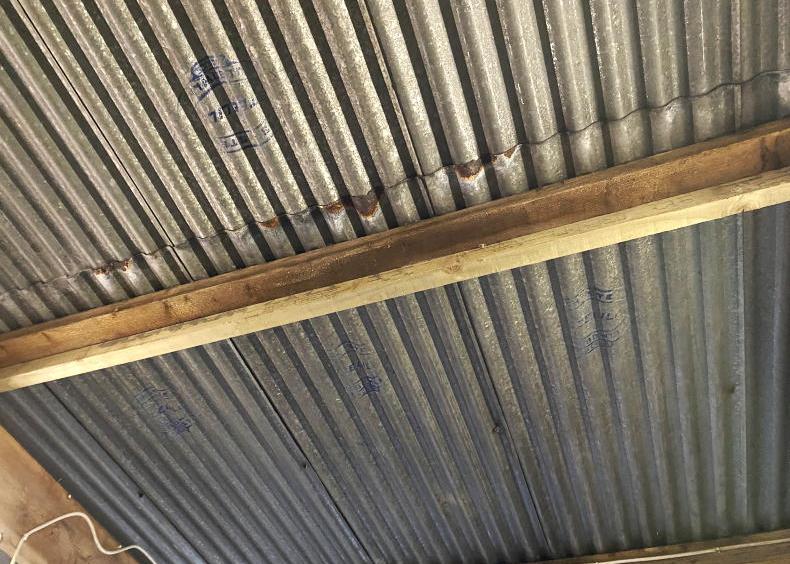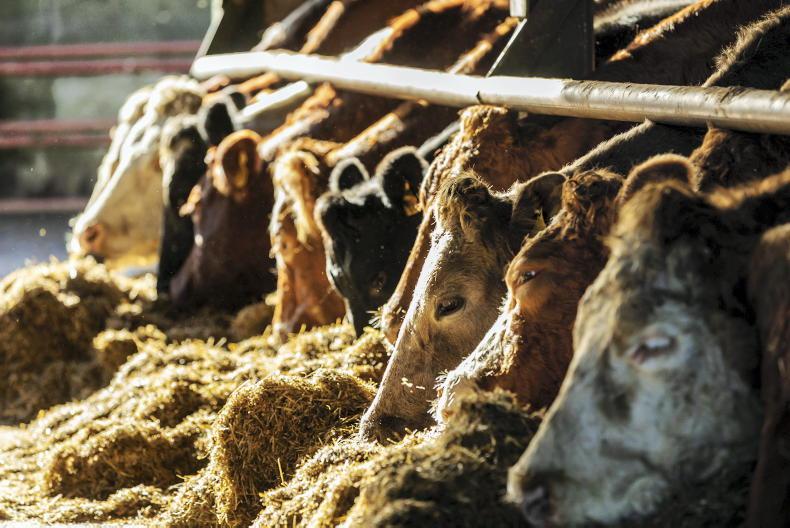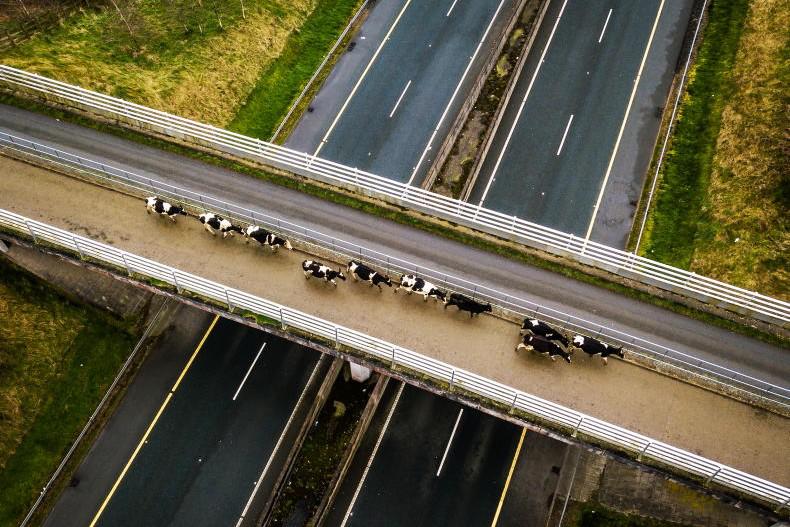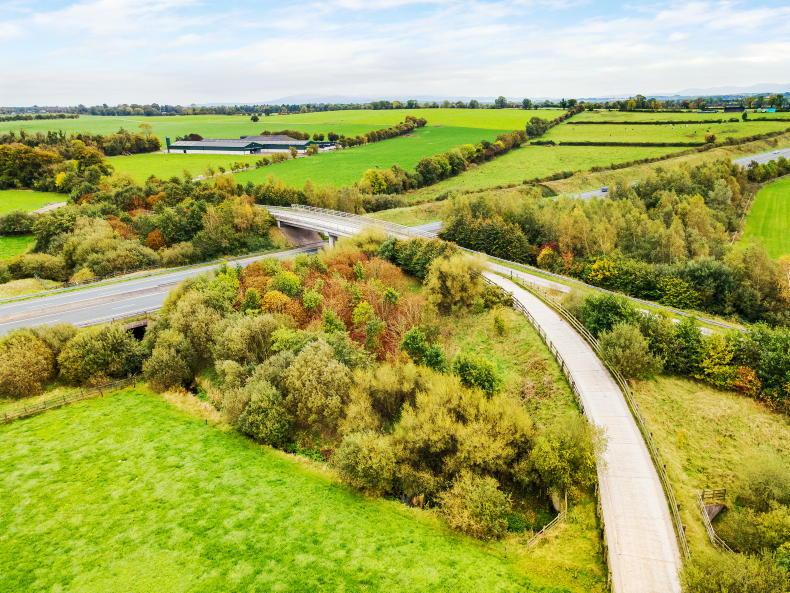he chat-up line “any road frontage?” suggests that the possession of ground bordering a road embodies the holder with a greater measure of eligibility for marriage. The topic is also politically charged, meaning that auctioneers are cagey to put a value on it. Why so? Because the value depends on many factors and it is “a pain for auctioneers; lots of work and then subject to the planning being granted or not, it may scupper the sale”, according to auctioneer Mike Brady of Brady Group. The band is “€25,000 to €250,000 depending on location and setting”.
Many young rural people move to the city for college or work. They live in apartments but when they have their own kids, they want a front door and a garden. They want their kids to grow up the way they did.
Minister of State at the Department of Housing, Local Government and Heritage Peter Burke acknowledges that 25% of our national housing output over the last number of years has been one-off housing. He accepts that while “one-off rural houses have to be facilitated, there is also a need to protect rural towns in terms of urban sprawl and services being dragged out”.
The minister was unequivocal that there is no plan to ban the building of one-off rural homes but they have to meet certain specifications.
“Every area is different in terms of its geographical nature, where it’s located and what the policy might be but I’m always very keen to point out that 85% of one-off housing applications are approved,” he continues.
So where is the rhetoric coming from if there is a “nothing to see here” line coming from the Department of Housing? The debate, he said is dominated by those that have been refused planning.
When does road frontage have site potential?
There are two main reasons why planning permission on a site will be refused. The first is that the person applying does not have a genuine “housing need” and the second is down to technical issues with the site itself.
The general predisposition of planning authorities is to restrict planning to those who are economically dependent on living there (such as farmers), or have an intrinsic link to the area (such as farmers’ children).
The minister went on to explain that if you don’t work in the area where you are looking to build, it is going to be difficult to demonstrate your economic reasons. He adds that “the children of farmers, who were brought up on the farm, even if they are not working in the area, may qualify as they have a strong need and social ties to the area”.
“What we try and encourage is that people go [build] on zoned land as all the infrastructure is there, the broadband is there, you have your local club, shops, everything together and that is good planning”.
Satisfying the “need” criteria is just the starting point though. There are many other metrics that have to be satisfied before planning permission will be granted.
Some, the minister says, are absolutely critical, “like wastewater, like percolation, like sight lines. All those areas have to be met first as well as proof that you have a social and economic need to reside in that specific rural area. But once you satisfy both policies you should get it across the line”.
Reading between the lines; yes, you can build in the country if both you and the site meet the criteria. But, even with two kilometres of road frontage, if there is no line of sight and/or no percolation, there is no planning! Forget it and go buy a house in the town.
It’s not even that easy, as even when the technical and need criteria are met, it is hard to generalise site potential as all 31 county development plans are different.
“There is always going to be a need for rural planning for someone with a garage or a veterinary practice or a farm. You have to have safeguards in place. You just can’t say, anyone that wants to move out of Dublin can live anywhere as then infrastructure won’t be aligned with houses that are being built.” Minister Burke says that this is critical.
Some counties are more liberal in relation to planning for one-off houses. For example, 75% of Mayo’s housing output over the last number of years has been one-off but the greater Dublin area and the commuter belts are completely different in terms of one-off housing.
Further to this, the minister explained that planning is rejected for reasons specific to a geographic area. For example, “over 90% of Co Leitrim is unsuitable for one-of housing because satisfactory percolation test requirements cannot be met”. Although they are trying to resolve that, the point is that “there’s a lot of hurdles outside of the social and economic before a site is suitable”.
Changing needs, changing demand
Mark Scott is professor of planning and dean of architecture, landscape architecture, planning and environmental policy in UCD. Ten years ago, the school completed a large project on rural housing which revealed a particular trend. In the 1970s and 1980s, the more traditional approach was to build down a lane or off a spur road but, in more recent years, the drift was towards building on the road side. So although housing rates, he says “had not changed, the houses themselves had become more visible as they are larger and located close to the roadside”.
One reason offered was that if sites were being sold to non-family members, the tendency may be to sell towards the periphery of the farm and away from the farmhouse but there is also demand from consumers to have that roadside property with a better view of the rural landscape.
In terms of how people access land, this is changing. More recent work that UCD has been involved in showed that most houses being built are by family members gifted land or buying land from a cousin with strong family connections. The land is not sold on the open market.
Another factor that this research revealed was that people really wanted to self-build and to influence the design of their property rather than buying from a developer. Mark points to an alternative option for those who do not have the social need in an area: the Tipperary County Council rural clusters that have secured some pilot funding.
He explains that this project sees Tipperary County Council experimenting with selling off serviced sites that allow people to self-build but they are quite close to existing towns and villages.
“It’s an interesting idea to try to balance that desire for rural living with self-build and reducing environmental impact by building on serviced sites rather than one-off housing.”
Sustainability
Although England is very different to Ireland in terms of land ownership, Mark thinks that the drive there to focus on villages and small rural towns as hubs being replicated here is not surprising.
“When you think of carbon tax and fuel for cars, it is only going to go in one direction so it’s going to become quite expensive to live in any rural environment. If we look at England where it’s really difficult to get planning permission, some of the most expensive properties in England are in rural environments, because they’re simply not building anything where supply is constrained and demand is really high.”
But the bank must value the frontage?
We asked Donal Whelton, head of agri, food and fisheries with AIB, if a kilometre of road frontage would make a property more attractive. His response was that road frontage is only a consideration when it is proposed that land is being offered as security for a loan. It is then only viewed in the context of access to the proposed security.
So as far as the bank is concerned, in terms of someone buying land, their repayment capacity will be based off their existing farm performance over the previous three to five years, plus the additional income that will be derived from the additional land. Whelton said that they “do not factor in any ‘hope value’ that a site may be secured on the land in the future”.
“Regarding a residential asset on the land, and again if that land was being offered as security, our recommendation to farmers would be to extract the residential asset on to a separate folio and keep it separate from the security offered to the bank.”
Lastly, when queried on a site being inherited by a child, he said that “the value of the site is factored into the mortgage application but, again, the borrowing capacity for the subsequent house will be based on repayment capacity and home mortgage lending guidelines”.
Meeting the planning requirements
The statement “site potential” is rarely offered as a selling tactic on press releases advertising land with road frontage for sale. However, the bottom line is that although a property bounding a road will almost always be advertised with the length of that frontage regularly highlighted, this may mean absolutely nothing if the site doesn’t meet the planning requirements of the local authority.










SHARING OPTIONS